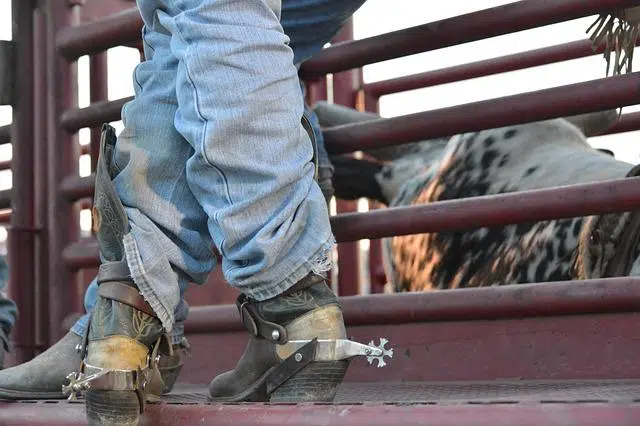
The horse was hurt with the spike to encourage it to move forward.
A spur used to sting an equine is known as a spur , characterized by having a tip with a stop that, in this way, does not penetrate much into the animal . The term derives from the Hispanic Arabic assiqáṭ , which refers to “eliminating weaknesses.”
Sting for the rider
The characteristics of the spurs changed over the years. At a general level, it can be said that it is a kind of stinger that the rider adjusts to his heel, securing it with straps to the foot. When using the goad, the aim is to get the horse to ride or make other efforts.
Regarding its structure, it has a metal arch whose shape is designed to adapt to the rider's heel. It is possible to tie it over the instep and under the arch, thanks to the use of a resistant tape. The nail that is inserted in this arch is usually of little extension but of considerable thickness. The spur, which has the same function, differs notably from the spur, since it is shaped like a wheel with teeth along its perimeter .
The use of the goad dates back to the First Iron Age , the final period of Prehistory prior to the creation of writing. Its development took place from the year 1200 BC. C., and was characterized by the use of iron instead of bronze because of its greater hardness, abundance and melting temperature. It was only in the 13th century that the small wheel that we know as a spur appeared, in theory to reduce the damage that the horse received every time it was spurred.
The incentive, in any case, is no longer used much. Typically, the spur or spur is only used as a last resort, when other stimuli have not given the desired result. Unfortunately, in any case the horse is subjected to exploitation and violence, to a greater or lesser extent. From the moment in which he is deprived of his freedom, the human being already incurs an unforgivable error. When, on top of this, he forces the animal to work for him, no matter how he treats it, there is no difference between this and slavery.
Motivation or incentive
From this meaning of incentive, other symbolic uses of the notion emerged. In this sense, a motivation or an incentive is called an incentive. An incentive, in short, is something that promotes an action or that can generate a certain effect. A discount on the price of a certain product, for example, can act as an incentive to promote sales.
For example: “This recognition is an incentive to continue working for the development of our beloved town,” “I believe that the construction of the museum will work as an incentive to attract more tourists,” “Money did not serve as an incentive and the Uruguayan soccer player finished "leaving the club despite the multimillion-dollar offer that the leaders made to renew his contract."

The current spurs, a design that succeeded the spur in the 13th century
Let's look at these examples in detail to fully understand the meaning of the term. In the first, the issuer states that having received recognition for his work so far is an incentive to move forward , to continue with the same enthusiasm and obtain increasingly better results. Let's not forget that in the absence of a positive response, we often become demotivated and our performance declines.
The second sentence describes the construction of a museum as an incentive for the growth of tourism. Finally, in the third example we see that the proposal to increase the salary was not sufficiently motivating to convince a given footballer to remain in the club. The leaders tried to use this tactic as an incentive, but they failed.
